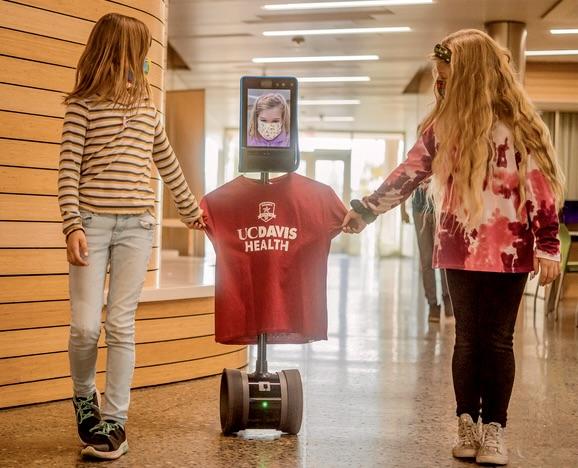Robot-Mediated Learning: Exploring School-Deployed Collaborative Robots for Homebound Children
Description
Over 2.5 million children in the US are medically homebound. They are socially isolated, physically segregated, and current educational practices largely exclude them from their school communities. Telepresence robots have emerged as a possible means to support these children to return to their local schools, however, it is not yet understood how homebound children can effectively use these robots for optimal learning and social development experiences. The goal of this project is to advance robot-mediated learning in schools, and investigate how co-robots can facilitate optimal learning experiences. The investigators will 1) Identify best practices and guidelines for the use of embodied co-robots in schools to best facilitate learning and social development; 2) Design new inclusive interfaces and control modalities for homebound children to use mobile telemanipulators, and 3) Pioneer new inclusive robotics curricula to support children with disabilities entering the STEM workforce. This project will yield new knowledge in multiple fields, including human-robot interaction, education, and healthcare. This project will also promote the progress of science by exploring how to make mobile telemanipulators accessible to people with disabilities, including new insights in the creation of future robot systems that can be dynamically reconfigured by end users without requiring domain expertise. This work will benefit society through insights into robot-mediated interaction which can extend to other domains, such as telemedicine, telehealth, and others who experience barriers to remaining socially connected to their real-world communities. The results of this project will bring to the forefront societal, educational, fiscal, and ethical issues concerning human-operated co-robots in public spaces, and explore new ways to be inclusive of students underrepresented both in society at large as well as in STEM fields.<br/> <br/>This project will inform several key research questions including: 1) Identifying robot-mediated learning tasks that contribute to optimal learning; 2) Creating best practices and guidelines that incorporate social norms for daily co-robot interactions; 3) Designing new accessible, adaptable, and usable control modalities for mobile telemanipulation for homebound children; 4) Leveraging interaction with an embodied co-robot to motivate interest in STEM, with a particular focus on medically homebound children and children with disabilities. The project will employ a case study research methodology, exploring stakeholder interconnectedness in the robot-mediated learning experience. The project will consist of 48 case studies, where each case will typically consist of 22 participants: a homebound child, a parent, a teacher, 18 classmates, and a school administrator. Multiple sources of data will be used, consisting of direct observations, semi-structured interviews, surveys, and focus groups. Transcripts from interviews, observation notes, and survey responses will undergo open-coding to identify commonalities/differences within and between cases. The themes and concepts that emerge from the analysis will be repeatedly compared with the data to ensure their validity. The research team will work with homebound children to co-design accessible and adaptable control interfaces to reflect the unique educational and social needs of this population. This project is funded by the National Robotics Initiative 2.0: Ubiquitous Collaborative Robots (NRI-2.0) program, and the Innovative Technology Experiences for Students and Teachers (ITEST) program which supports projects that build understandings of practices, program elements, contexts and processes contributing to increasing students' knowledge and interest in science, technology, engineering, and mathematics (STEM) and information and communication technology (ICT) careers. This award reflects NSF's statutory mission and has been deemed worthy of support through evaluation using the Foundation's intellectual merit and broader impacts review criteria.
WEBSITES
Social Media
